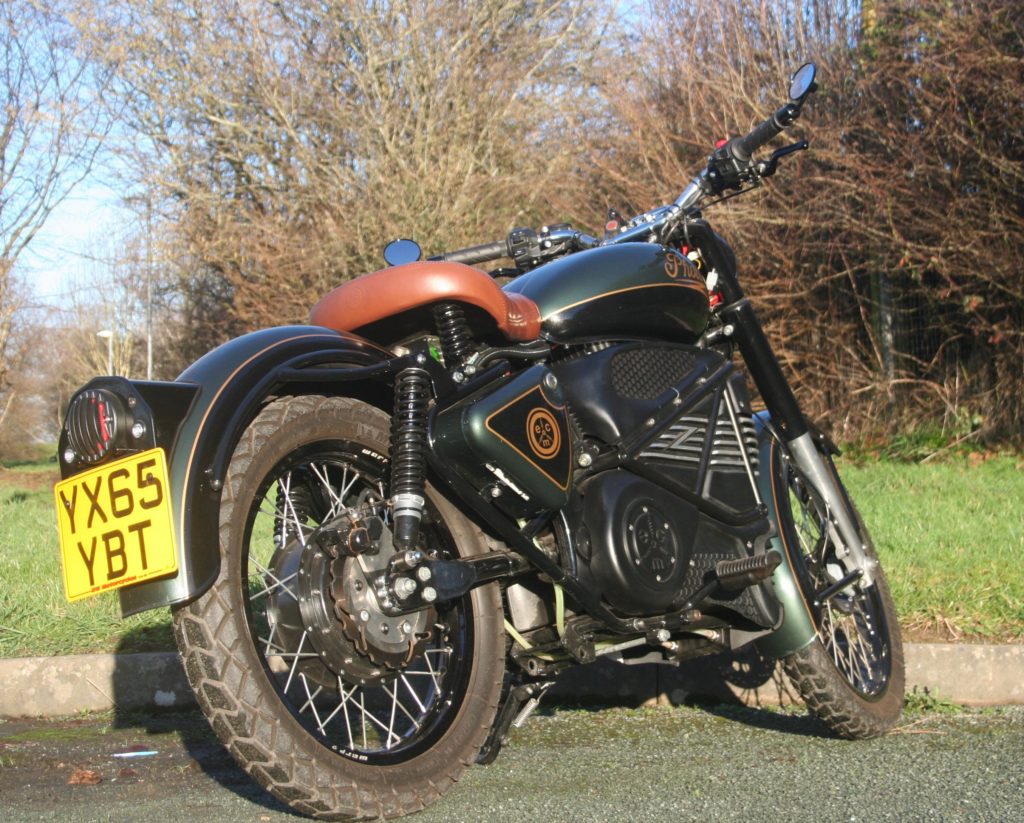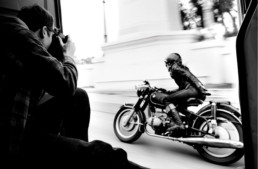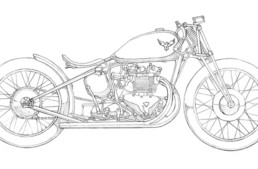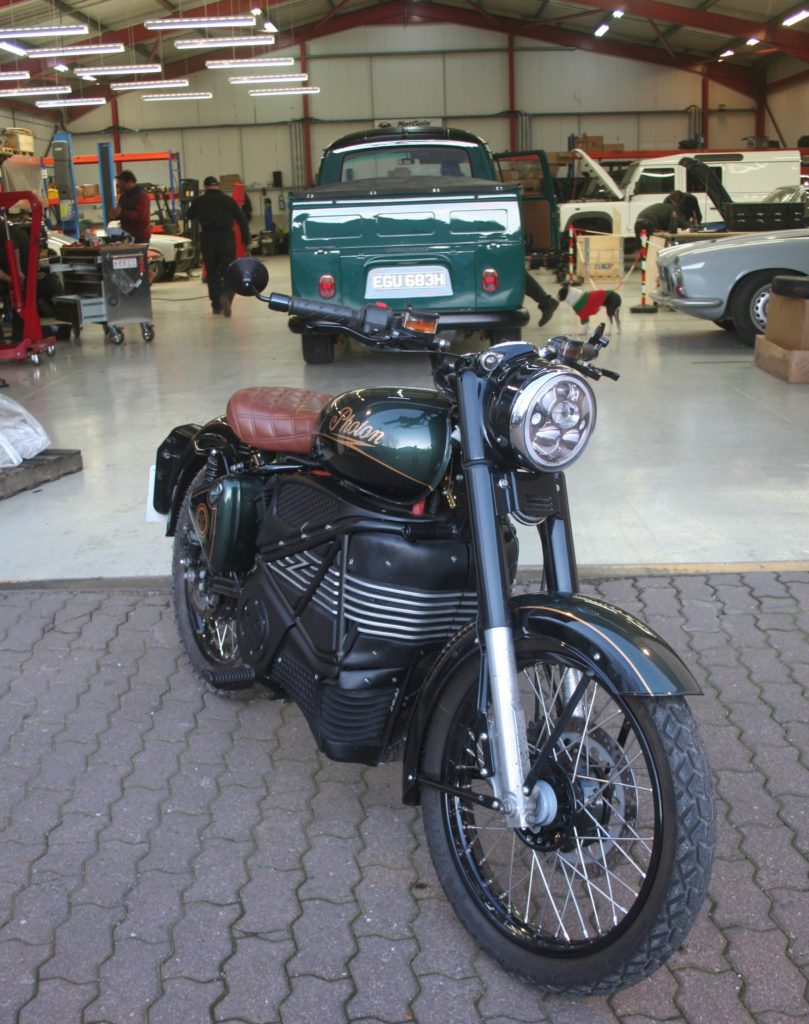
Direct Drive
The Photon is the result, based on a brand new RE Bullet Classic without its 500cc engine and five-speed box. In their place are four 2.5kwh lithium-ion batteries from LG Chem, hidden under 3D-printed panels, which fill the void well. Most electric motorcycles, like Zero, mount the motor where a petrol bike’s gearbox would be, but Richard Morgan chose to move it to the rear wheel hub. These hub motors are usually restricted to scooters, but for the Photon, the 13Kw motor is water-cooled – coolant supplied from a front mounted radiator with twin fans and pumped into the motor’s centre. Electric Classic Cars don’t quote a torque figure, but a similar 14Kw hub motor claims ‘more than 300Nm.’ That’s not as tarmac-shredding as it sounds, because you’ve only got one gear, but it’s still a muscular rotational effort. Of course, as it’s in the hub, the motor drives direct, so there’s no chain, belt or shaft to worry about. As for the essential electronics masterminding the power delivery and charging/discharging process, they’re squeezed into what used to be the Bullet’s fuel tank. Apparently every square inch of space inside is used, which I would say amounts to a masterpiece of packaging.
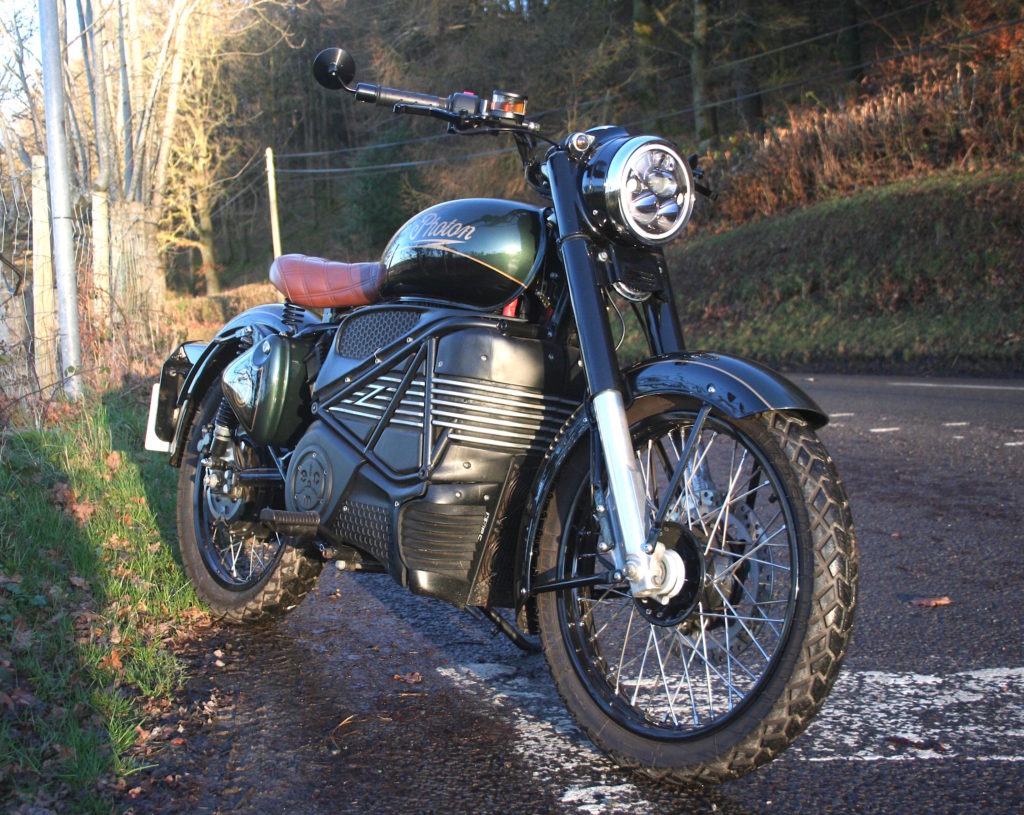
Big Torque
At 200kg, the Photon weighs about the same as a fueled-up Bullet 500, so it feels quite familiar as you swing aboard, especially as the view from the rider’s position is all stock. There’s no kickstart or pushbutton: turn the key, wait for the speedo to dial up and a green LED to show, twist the grip and you take off silently – in fact, the Photon is even quieter than other electric motorcycles because there’s no chain noise.
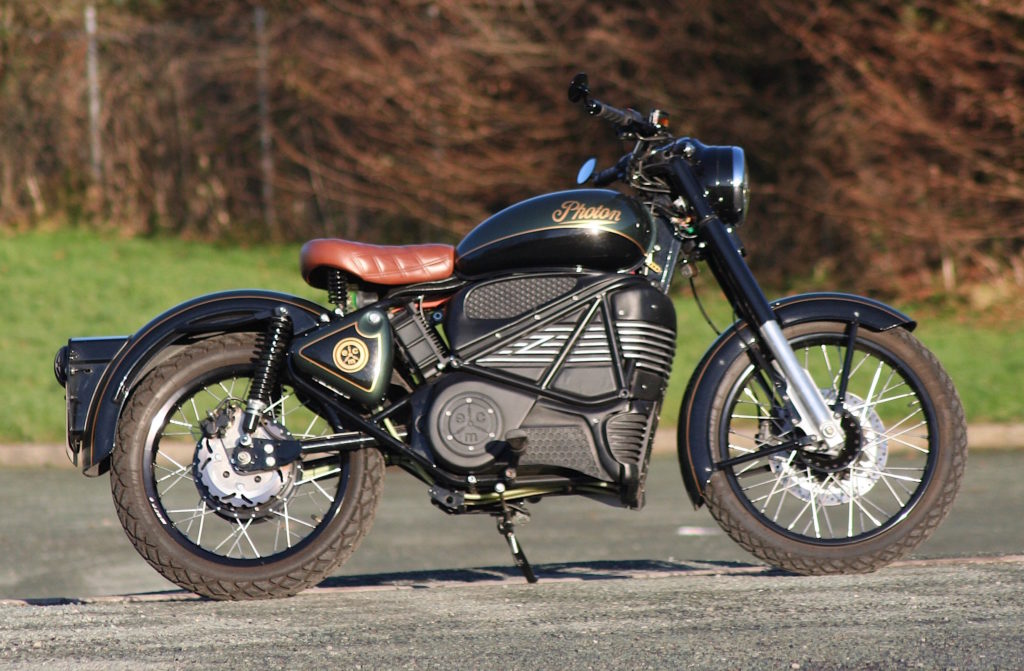
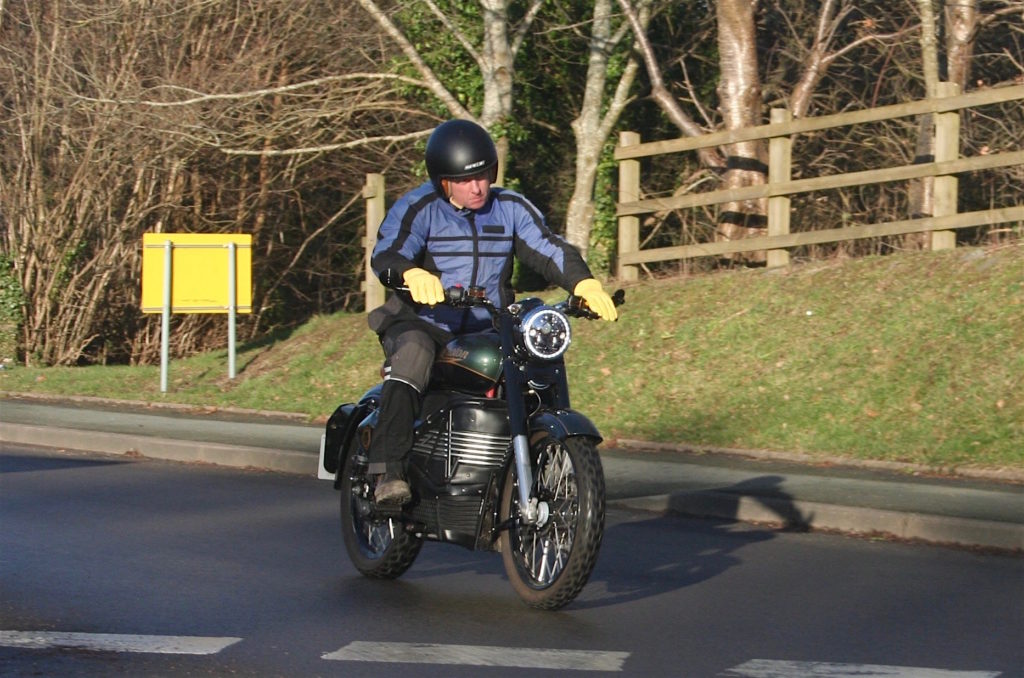
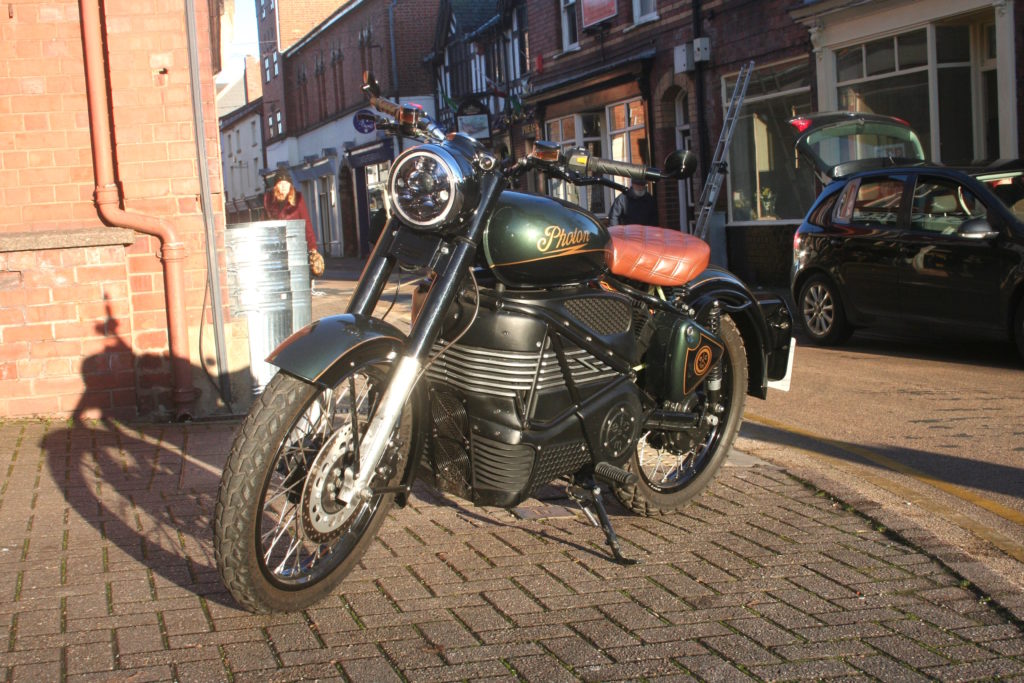
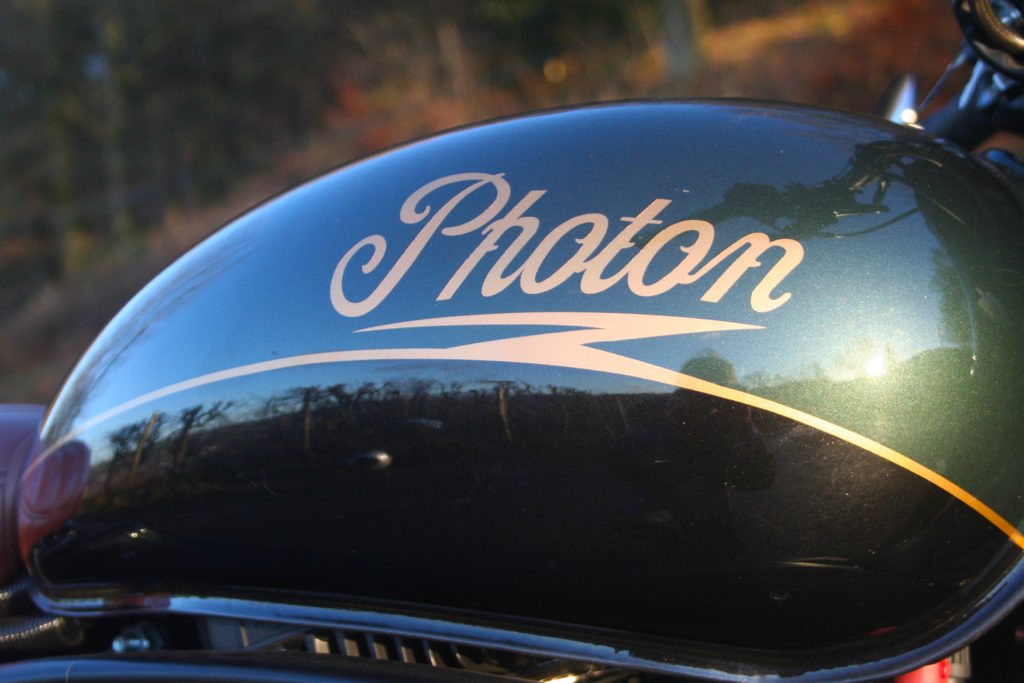
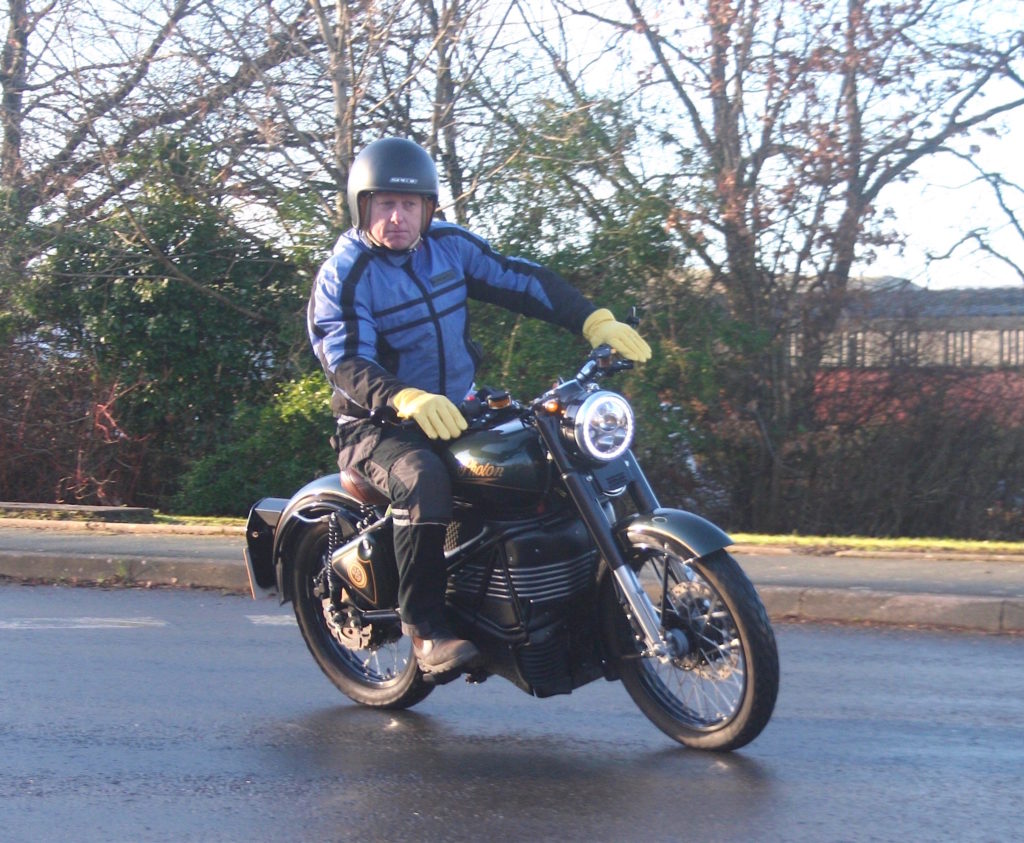
Good Looker
A pleasant design aspect of the Photon is that it looks mildly customized. Dark green paintwork (red and blue will be production options) with gold coachlining and black rims, are all quite classy. The headlight is LED and the front indicators are built into the the Bullet’s little running lights, and very neat they are too. The quilted solo seat (no dual seat option) blends in well and Richard Morgan is planning to offer matching pair of leather panniers to carry to extra batteries, boosting the range by 50%.
